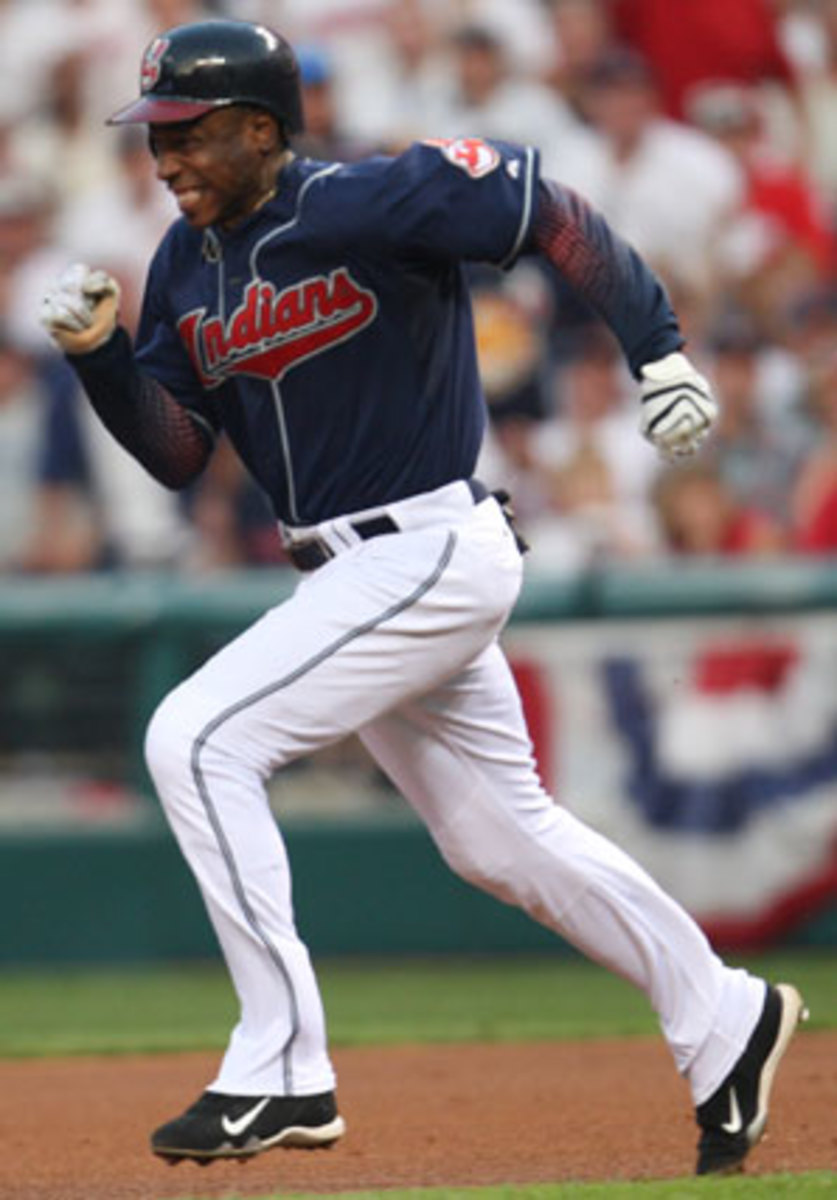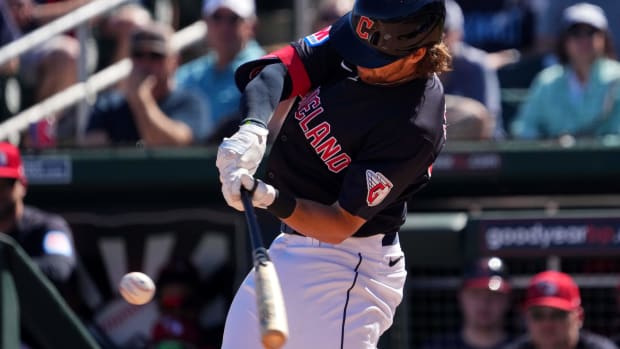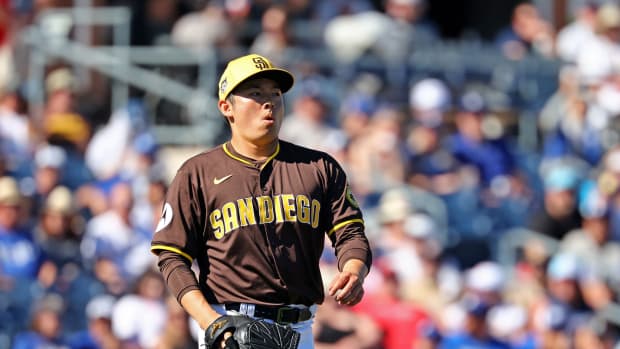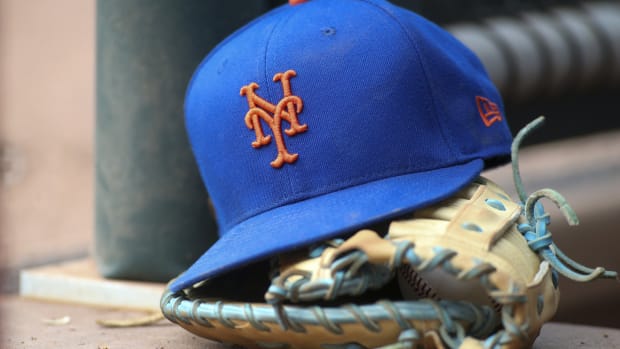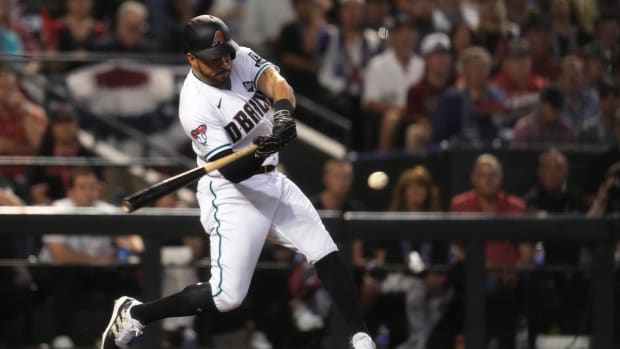JAWS and the 2013 Hall of Fame ballot: Kenny Lofton
Kenny Lofton ranks 15th in baseball history with 622 career steals. (Heinz Kluetmeier/SI)
The following article is part of my ongoing look at the candidates on the BBWAA 2013 Hall of Fame ballot. For a detailed introduction to JAWS, please see here.
Kenny Lofton was forever on the move. During a 17-year major league career spent largely as a leadoff hitter and centerfielder, he reached base more than 3,400 times and stole over 600 bases. He did so while wearing the uniforms of 11 different teams —two short of the record — not including three stints with the Indians. He was a postseason staple, reaching the playoffs with six of those teams a total of 11 times. Though he never won a World Series ring, he certainly covered a whole lot of ground.
Despite his excellence, Lofton was somewhat underrated in his day, and he scores surprisingly well by some measures when it comes to the Hall of Fame — better than some of the more heralded centerfielders on this year's ballot, at the very least. He's in danger of getting lost among the flashier candidates on the ballot, so it's important to give his case its due.
Player | Career | Peak | JAWS | G | H | HR | SB | AVG | OBP | SLG | TAv |
Kenny Lofton | 64.9 | 42.0 | 53.5 | 2103 | 2428 | 130 | 622 | .299 | .372 | .423 | .277 |
Avg HOF CF | 67.1 | 42.5 | 54.8 |
|
|
|
|
|
|
|
|
Born in an Indiana slum to a mother of high school age and weighing just three pounds at birth, Lofton was raised by his maternal grandmother. A two-sport athlete in high school, he was good at baseball but all-state in basketball, and earned a scholarship to play hoops at the University of Arizona under legendary coach Lute Olson. Though just six feet tall, Lofton was the sixth man on their 1988 Final Four team -- a backup point guard behind Steve Kerr -- who was renowned for his athleticism and set a school record for steals.
{C}
With basketball done, Lofton joined the Arizona baseball team in 1988, and while he saw sparing duty as a pinch-runner and received only one official at-bat, his speed came to the attention of Astros scout Clark Crist during an intrasquad game. Houston drafted him in the 17th round of the 1988 draft. Lofton spent three years at various levels of A-ball, showing little power but utilizing his blazing speed. After hitting .331/.407/.395 with 62 steals in High-A in 1992, he was promoted to Triple-A, where he added 17 triples to his 40 steals (but 23 caught stealing) en route to a .308/.367/.417 line.
In late September, the Astros called him up, and he played 20 games on a team that also featured second-year starting catcher Craig Biggio, rookie first baseman Jeff Bagwell, third baseman Ken Caminiti, leftfielder Luis Gonzalez, and centerfielder Steve Finley. Not all of those players had hit their strides yet, and the 65-97 Astros used Lofton as a trade chip that winter, sending him to Cleveland for pitcher Willie Blair and catcher Eddie Taubensee; the latter would take over behind the plate, enabling Biggio to move to second base.
Lofton joined an Indians team that was just starting to accumulate a fair bit of talent as well, taking over as the starting centerfielder in a lineup that featured catcher Sandy Alomar Jr. and second baseman Carlos Baerga. In 1993, Lofton hit .285/.362/.365 while stealing a league-leading 66 bases in 78 attempts, and thanks to outstanding defense (+18 according to Total Zone), he finished with 6.3 WAR, good for fourth among position players. He came in second to the Brewers' Pat Listach in the AL Rookie of the Year voting.
Lofton would lead the AL in stolen bases in each of the next four years as well, helped by his own improvements as a hitter that put him on base more often. Setting the table for sluggers Albert Belle, Manny Ramirez and Jim Thome, he hit a combined .324/.388/.456 while averaging 65 steals a year from 1993 to 1996, making three All-Star teams and winning four Gold Gloves. Under new manager Mike Hargrove, and playing in brand-new Jacobs Field, the Indians went 66-47 in the strike-shortened 1994 season, their first winning campaign since 1986. Lofton produced an AL-leading 7.1 WAR in that abbreviated season, just 0.2 wins off his previous high from the year before (which had ranked third).
Rib and leg injuries and the abbreviated schedule due to the players' strike limited him to 118 games and 3.8 WAR in 1995, but his 54 steals and 13 triples still led the league, and he was part of a 100-44 dynamo that delivered Cleveland's first pennant since 1954 before falling to the Braves in the World Series. He set career highs with 210 hits, 14 homers and 75 steals in 1996, delivering 5.3 WAR for a 99-win team that was bumped off in the first round of the playoffs by the Orioles.
Over the five-year stretch from 1992-1996, Lofton had been worth 29.8 WAR, the third-highest total among position players behind Barry Bonds (41.3) and Ken Griffey Jr. (33.3). But after talks regarding a contract extension broke down — Lofton was said to have rejected a five-year, $44 million deal — with one year to go before free agency, Indians general manager John Hart dealt him and pitcher Alan Embree to the Braves in exchange for a pair of All-Star outfielders in Marquis Grissom and David Justice. Lofton hit well in Atlanta (.333/.409/.428) and earned All-Star honors for the fourth straight year, but a groin injury limited him to just 122 games and 27 steals in 47 attempts. Meanwhile, the Indians made it back to the World Series without him, though Grissom had a down year.
Now on the other side of 30, Lofton decided to return to Cleveland as a free agent after the season, signing a three-year, $24 million deal; centerfield was reopened for him when Grissom was traded to Milwaukee. He earned All-Star honors while helping the Indians back to the playoffs in 1998 and 1999, totaling 11.1 WAR in those two years, but his play on both sides of the ball declined in 2000 and 2001, after he had his $8 million option picked up; he was worth just 4.8 WAR in those two years. He hit free agency as a 34-year-old coming off the worst season of his career, .261/.322/.398 with just 16 steals in 2001.
Thus began the itinerant phase of Lofton's career. He signed a one-year deal with the White Sox, but was flipped to the Giants in late July, and wound up reaching the World Series. A one-year deal with the Pirates the following year led to another short stop, as he was flipped to the playoff-bound Cubs in late July. For the 2004 season, he signed a one-year contract with the Yankees, who had an aging Bernie Williams in centerfield, but leg injuries cut into his playing time, and he never quite gained manager Joe Torre's trust. In Game 6 of the ALCS against the Red Sox — the one where the Yankees were busy blowing a 3-0 lead, and facing Curt Schilling and his injured ankle — Torre elected to keep Lofton on the bench when a bunt might have tested and perhaps chased the gimpy Schilling. Williams homered for the Yankees' lone run off Schilling, but DH Ruben Sierra went 0-for-3 with three strikeouts.
The 2005 season found Lofton with the Phillies, hitting a sizzling .335/.392/.420 and stealing 22 bases in 25 attempts for a team that fell a game short of the wild card. The next year he was a Dodger, hitting .301/.360/.403 and stealing 32 bases for a division-winning team. He began the 2007 season with the Rangers, but came back to Cleveland for a playoff run that ended one win shy of another trip to the World Series. Coming off another solid year (.296/.367/.414) he could have found work at age 40, but his desire to play every day and be paid well left him at odds with the market. Reportedly, he passed up a $1 million deal with the Rays, one that would have resulted in another postseason ride. Even after sitting out a season, he sought a job for 2009, but was unable to find a fit.
Lofton finished his career ranked 15th all-time in stolen bases with 622. Given that, six All-Star appearances and five Gold Gloves, he doesn't look like an unreasonable candidate for Cooperstown, though his Hall of Fame Monitor and Hall of Fame Standards, which compare him to enshrined players using a variety of season and career criteria, are both below average. Via JAWS, he's slightly below the Hall standards for centerfielders: 2.2 wins below the career mark, 0.5 below the peak mark and 1.3 point below overall. Still, he ranks an impressive eighth among centerfielders via this methodology, with only Willie Mays, Ty Cobb, Tris Speaker, Mickey Mantle, Griffey, Joe DiMaggio and Duke Snider above him. The rankings are especially top-heavy; just six of the 18 Hall of Fame centerfielders (all of the aforementioned save for Griffey) are above the standard, with Mays, Cobb and Speaker all at least 39 points above it.
One can argue that if Lofton (or any player) ranks among the top 10 at his position all-time, that's a good reason for him to be elected, with a point here or there to be forgiven. It's a compelling argument, certainly a stronger one than the one (advanced in a Twitter conversation that I can no longer find) that he deserves a bit of extra credit because of the value lost via the 1994 strike, when he was more valuable on a per-game basis than at any other point his career. The annals of baseball history are filled with career interruptions; DiMaggio, Ted Williams and so many others lost time to World War II, Williams and Mays to the Korean War, numerous recent candidates to the 1981 and 1994 strikes (Tim Raines is a double-jeopardy champion there). Why should a special exception be made for Lofton, particularly when comparing him to players uncredited for missing much more time?
From a JAWS standpoint, the most troubling thing about Lofton's candidacy is its similarity to the case of Larry Walker, who winds up ninth among rightfielders, one point above the standard. The change from Baseball Prospectus' WARP to Baseball-Reference.com's WAR as the underlying valuation metric yields very different answers founded mainly in the discrepancies produced by differing defensive systems. Lofton is 112 runs above average according to Total Zone for his career, including 125 runs above average for 1991-2002, the period for which those numbers are used in WAR. For 2003 onward, via Defensive Runs Saved, he's at −16, pretty much in line with his −13 Total Zone in that span. So call him +109 according to B-Ref. Meanwhile, via BP's Fielding Runs Above Average, he's actually six runs in the red for his career, a 115-run discrepancy. Using last year's WARP-based data set, where the standards for centerfielders were at 72.8/46.8/58.3, Lofton came in at 56.2/34.1/45.2, around 13 points below, and a less spectacular 22nd among centerfielders, with 11 of the 18 Hall of Famers above him.
By switching from WARP to WAR, I'm prepared to get some different answers to the questions of Hallworthiness for certain players. As I said with regards to Walker, a change in the JAWS system's verdict is a consequence of our attempt to gain something resembling an objective answer to a question that may not actually have one. As with any process founded in science, we do the best we can with the tools at our disposal to provide answers to such questions. Hopefully, they're the right ones, but those answers may change as our tools develop and new information becomes available.
I'm not closed to the idea that Lofton is worthy of a Hall of Fame vote, by any means. In 10 years worth of JAWS analysis, I've come across more multiple Gold Glove winners than I can count on both hands whose advanced defensive metrics even in years they won were just awful, with Bernie Williams (four Gold Gloves in years where was a combined 40 runs below average) only the most recent example. With Lofton, at least according to Total Zone, the legend matches the data; he was 43 runs above average in his four Gold Glove seasons.
Even so, he's just a wee bit short, even giving him the benefit of the doubt with regards to the accuracy of the defensive metric. The JAWS virtual 2013 ballot is filling up, with Jeff Bagwell, Craig Biggio, Edgar Martinez and Mike Piazza already taking up spots and a good number of qualified players among the 14 I have yet to analyze. Having already relegated Walker to the provisional pile as a borderline candidate, slightly above the JAWS standard due mainly to defense, I have to conclude that Lofton belongs below him — which is to say absent from my ballot this year.






























